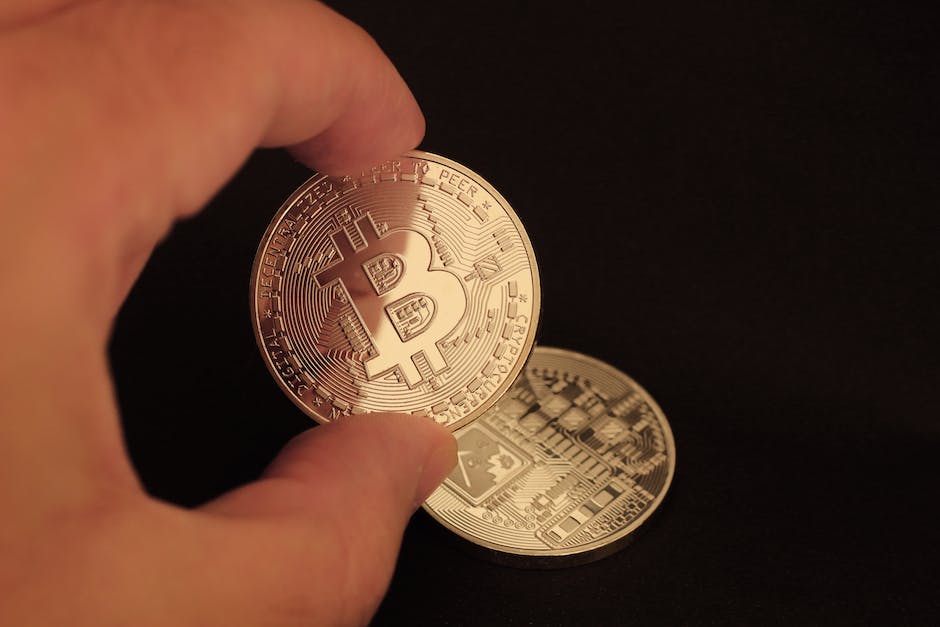As we stand at the forefront of a technological revolution, blockchain innovation continues to redefine the parameters of our digital landscape. Within this transformative era, Decentralized Finance (DeFi) emerges as a groundbreaking force, dismantling traditional financial barriers and forging open, permissionless systems through which individuals can navigate with newfound autonomy. Parallel to this, the rise of Non-Fungible Tokens (NFTs) challenges our preconceptions of digital ownership, weaving itself into the very fabric of industries as diverse as gaming and real estate. Yet, the full potential of these phenomena hinges on overcoming the technical obstacles of scalability and ensuring seamless interoperability between diverse blockchains. Amidst this dynamic environment, we must also carefully consider the evolution of regulatory frameworks crucial in sculpting a secure and compliant future for blockchain innovations. This essay delves into these critical areas, heralding a comprehensive understanding of the blockchain revolution’s vast and intricate landscape.
Decentralized Finance (DeFi) Developments
Decentralized Finance Unlocks New Avenues in Financial Services Through Blockchain
The financial sector is witnessing a groundbreaking innovation dubbed Decentralized Finance, or DeFi, which is overhauling traditional banking services by leveraging the robust blockchain technology. DeFi plays a pivotal role in enabling open-access financial systems, operating without central authorities, thereby democratizing financial operations that were once the stronghold of institutional behemoths.
At its core, DeFi employs blockchain, particularly Ethereum, to cultivate a system where financial products become accessible to anyone with an internet connection. Beyond the reach of sovereign currency controls and banking regulations, it ushers in a new era where transactions are transparent, peer-to-peer, and secured via cryptography.
A key component that drives DeFi is smart contracts. These self-executing contracts underpin most DeFi applications, automating transactional processes without intermediaries. With smart contracts, terms of agreements are written in code and executed on the blockchain, which means reduced risk of fraud and default.
DeFi encompasses a spectrum of financial services including lending, borrowing, yield farming, and asset trading. Unlike conventional banking systems, DeFi lending platforms allow users to secure loans instantaneously, bypassing credit checks, and offering collateral in the form of cryptocurrency. This not only cuts down the processing time but also opens doors for those previously excluded from the traditional financial ecosystem.
One of the most talked-about aspects of DeFi is yield farming, where users earn returns from locking in cryptocurrencies. This incentivizes liquidity and ensures a decentralized governance model, aligning closely with the ethos of blockchain. Meanwhile, decentralized exchanges (DEXs) are revolutionizing asset trading, as users retain control over their funds, trading directly from their cryptocurrency wallets.
Concerns, however, linger over De-Fi’s nascent features such as security vulnerabilities and the steep learning curve. Though smart contracts are generally secure, coding errors can lead to exploits, a risk exemplified by a number of high-profile breaches. Additionally, the knowledge barrier might deter the average user from fully embracing DeFi services.
Despite these challenges, the transformative potential of DeFi is unmistakable. It has already begun reshaping the financial landscape by offering unparalleled transparency, increased accessibility, and reduced reliance on traditional financial institutions. As individuals increasingly seek agency over their financial dealings, DeFi is set to mature and integrate even more deeply with the evolving needs of the modern economy.
With the constant influx of innovative use-cases and the surge in blockchain technology adoption, DeFi stands at the precipice of radically redefining financial services. Fasten your seatbelts; the journey to a decentralized financial future is well underway.

Non-Fungible Token (NFT) Ecosystem Growth
NFT Marketplaces: A Breeding Ground for Tech Innovation
Non Fungible Tokens, or NFTs, have captured the imaginations of artists and collectors alike, evolving rapidly from a niche curiosity to a significant, booming marketplace. It’s not just the digital art world that’s getting a makeover, but a whole host of industries finding inventive applications for NFTs. So, what’s the secret sauce? What technological advancements are propelling NFT marketplaces into the stratosphere?
Let’s dive headfirst into the most salient innovations:
Blockchain Scalability and Efficiency
High gas fees and slow transactions? Yesterday’s news. NFT marketplaces are soaring thanks to blockchain networks like Ethereum 2.0. These upgraded platforms slash transaction costs and speed up processing times, unleashing a torrent of NFT transactions, from art sales to gaming assets.
Interoperability Takes Center Stage
Imagine a world where NFTs move seamlessly between different applications and blockchains. That’s no pipedream – interoperability is here. New protocols enable NFTs to retain their value across platforms, catalyzing a more integrated, expansive ecosystem.
AI Integration
Enter the era of algorithm-generated art. Artificial intelligence is no longer just a buzzword; it’s actively shaping NFT marketplaces. AI algorithms create unique, captivating pieces of digital art. Moreover, machine learning aids in assessing NFT value, detecting fakes, and much more.
Immutable Provenance and Transparency
Ever buy a fake? With NFTs, that risk diminishes. Blockchain guarantees unassailable ownership records and provenance. This crystalline transparency emboldens trust, a currency more valuable than the NFTs themselves.
Tokenization of Physical Assets
Remember when NFTs were digital-only? Now, everything from a piece of fine art to real estate gets tokenized. This physical-digital bridge empowers owners to sell fractional interests in physical assets, democratizing access to investments historically reserved for the well-heeled.
Social Tokens and Community Building
NFT marketplaces are morphing into social hubs. Artists and creators issue social tokens as a loyalty system, solidifying fan bases and rewarding engagement. It’s a new frontier for the creator economy, where community support translates into real value.
Enhanced Utility and Metaverses
NFTs doing nothing but looking pretty? That’s in the rearview mirror. Now, they unlock experiences, grant access to events, and serve as your passport into ever-expanding metaverses. The utilitarian shift is tangible, with NFTs facilitating an array of digital experiences.
Converging with Traditional Financing
Art and collectibles have long been part of the traditional investment portfolio, but NFTs are changing the game. The lines between conventional asset trading and NFT investing are blurring, with NFT marketplaces introducing avenues for traditional finance to engage with digital assets.
The AI-driven, hyper-efficient NFT marketplace today is but a shadow of what’s slotted for tomorrow. With these innovations at the helm, NFTs are set not merely to complement the art and collectibles market but to redefine what ownership and value mean in the digital age. Keep an eye peeled; the NFT space is brimming with potential, challenging old paradigms, and setting the stage for unprecedented growth.

Blockchain Scalability Solutions
Scalability Solutions Elevating Blockchain Performance
As blockchain technology becomes the backbone of emerging decentralized financial systems, addressing its scaling challenges has become crucial. In tech parlance, scalability refers to a system’s capability to handle growing amounts of work or its potential to accommodate expansion. For blockchains, this means processing transactions swiftly and efficiently as demand surges, without compromising security or decentralization. Consequently, several innovative solutions have been devised to bolster blockchain efficiency and facilitate seamless scaling.
Layer 2 Protocols – The Efficiency Enhancers
Enter the realm of Layer 2 protocols, where solutions like Lightning Network for Bitcoin and Optimistic and zk-Rollups for Ethereum reign supreme. By transferring the bulk of transactions off-chain, only settling the final state on-chain, these protocols drastically reduce the burden on the main blockchain. This ensures quicker transaction times and lower fees, without clogging the network.
Consider the significance of this upscaling mechanism—Lightning Network facilitates instantaneous Bitcoin transactions, propelling it beyond just a digital gold counterpart. Similarly, Ethereum’s Rollups promise accelerated transaction throughput, crystalizing DeFi’s viability even during peak network congestion.
Sharding – The Key to Dividing and Conquering
Sharding breaks the blockchain into smaller, more manageable pieces called “shards,” each capable of processing independent transactions. Think of a highway expanding from two lanes to ten; suddenly, the traffic flow improves. Sharding, poised for implementation in Ethereum 2.0, envisages a blockchain ecosystem where multiple parallel shards coexist, enhancing the network’s ability to process transactions exponentially.
This isn’t just theory; sharding has been successfully employed by Zilliqa, showcasing significant throughput improvements while maintaining the network’s integrity and security. A future where Ethereum successfully implements sharding could mark a turning point for DeFi’s scalability.
Sidechains – The Independent Allies
Sidechains are alternative blockchains that run parallel to the main chain, each with its rules and governance mechanisms. They relieve the primary blockchain by processing transactions independently.
Projects like Polygon (previously Matic Network) are exemplifying the power of sidechains. By allowing DApps to run on its sidechain, Polygon reduces the load on Ethereum, enabling a more responsive and cost-effective experience for users and developers alike.
State Channels – The Discrete Transaction Pathways
State channels enhance scalability by enabling off-chain transaction channels between parties. Only the opening and closing transactions are recorded on the main chain, rendering the intermediate steps invisibly efficient. This is particularly useful for applications that require rapid transaction sequences, like online games or high-frequency trading platforms.
Marrying Interoperability and Scalability
Finally, fostering interoperability between disparate blockchains emerges as a staple for effective scalability. Protocols such as Polkadot and Cosmos are trailblazers in this arena, constructing a framework where different blockchains can communicate and transact seamlessly. This interoperability not only enhances scalability by spreading the load but also fosters a more integrated and versatile blockchain landscape.
Tying it back to DeFi, enhanced interoperability positions the space for future-proof adaptability. As multiple blockchains can connect, asset and data transfer across different DeFi platforms becomes a tangible reality — simplifying the user experience and extending the capacity of the ecosystem.
In essence, through Layer 2 protocols, sharding, sidechains, and state channels, along with a deepened commitment to interoperability, blockchain technology bolsters its scalability. This is pivotal for the sustained growth and adoption of DeFi, promising a future where financial transactions are secure, swift, and decentralized. The road to mainstream blockchain scalability is indeed paved with formidable innovations, each contributing to the evolution of a more robust and responsive framework, capable of supporting the burgeoning digital economy.

Interoperability Between Blockchains
Unveiling the Nexus: How New Tech is Paving the Way for Blockchain Interoperability
The pursuit of a seamlessly interconnected blockchain ecosystem is accelerating, with groundbreaking technologies at the helm facilitating interoperability like never before. A mosaic of diverse blockchains has emerged, each with its own rules, consensus mechanisms, and tokens. Yet, the ability for these disparate systems to communicate and transact with one another has been a significant hurdle. Enter the era of new technological solutions that are bridging the divides, promising an integrated future for blockchain technologies.
Cross-Chain Protocols: Connectors of the Blockchain World
Cross-chain protocols are leading the charge toward interconnectedness, enabling blockchains to interact and share information. They act as the translators in a multilingual conference, ensuring that every participant speaks the same language. Projects, such as Cosmos and Polkadot, have developed frameworks for cross-chain communication, which allow otherwise isolated blockchains to transfer value and data. Such protocols embody the transformative capacity of blockchain technology, expanding its horizons beyond the confines of any single network.
Blockchain Bridges: The Pathways to Asset Transfer
Blockchain bridges play a pivotal role in achieving interoperability by allowing digital assets to hop from one chain to another. These bridges create pathways that mitigate the need for intermediaries, providing users with seamless asset transfer capabilities. Whether it’s wrapping Bitcoin for use on the Ethereum network or porting tokens between layer 1 and layer 2 solutions, bridges are essential infrastructures flattening the learning curve and paving the way toward a frictionless, multi-chain future.
Interledger and Atomic Swap Technologies: Enabling Trustless Exchanges
Technologies like the Interledger Protocol (ILP) and atomic swaps are revolutionizing the mechanics of blockchain interoperability. ILP connects diverse payment networks by providing a standard for routing payments across different ledgers. Meanwhile, atomic swaps facilitate the trustless exchange of cryptocurrencies across distinct blockchains without the need for third-party intermediaries. These technologies signal an ongoing shift towards a decentralized world where users can engage in direct, secure transactions across a tapestry of blockchains.
Smart Contract Enhancements: Building Bridges In-Code
Improvements to smart contract functionality further empower blockchain networks to understand and execute transactions with external systems. These code-based contracts, when given the capability to interact with other blockchains, serve not only to automate processes but also to ensure that diverse systems can work together harmoniously. With emerging smart contract platforms like Chainlink, the execution of interoperable agreements across multiple blockchains has become a tangible reality.
The Oracle Networks: Vital Cogs in the Interoperable Machine
Oracles have emerged as critical components in the interoperability narrative, serving as data relays between the off-chain and on-chain worlds. Oracles fetch real-world information and feed it into smart contracts, enabling broader application scenarios. Their integration with blockchain networks has opened up a world where smart contracts can execute based on external events and data, thereby enhancing the use cases and capabilities of decentralized apps (dApps) within an interoperable framework.
Final Word on the Evolution of Interoperability
As blockchain technology continues to mature, the tools and systems supporting interoperability evolve in tandem. Not only do they exemplify the innovative spirit driving the industry, but they also underscore a commitment to a future where blockchains do not operate in silos but as part of an interconnected digital symphony. The advancements in cross-chain protocols, bridges, atomic swaps, smart contracts, and oracles are not just theoretical concepts; they are active, ongoing projects shaping a new paradigm. These technologies are not simply paving the way for interoperability in the blockchain sphere; they are actively constructing it, ensuring that the digital world of tomorrow is more integrated, efficient, and versatile than ever before.

Regulatory Evolution and Compliance
Navigating the Complex Web of Blockchain Regulation and Compliance
In the rapidly evolving domain of blockchain, regulatory measures are perpetually playing catch-up with innovation. The surge in decentralized finance (DeFi) platforms has pressed regulatory bodies to intensify their scrutiny and propose frameworks that ensure investor protection without stifling creativity and growth. The latest trek into the regulatory landscape reveals ongoing initiatives to tether the wilds of blockchain with the certainty of compliance.
Globally, the conversation around blockchain regulation is gaining momentum. In the United States, recent actions by the Securities and Exchange Commission (SEC) signify a commitment to pursuing a clearer path for blockchain compliance. The SEC has honed in on Initial Coin Offerings (ICOs), treating them akin to securities, implicating that they should be subject to the same regulatory frameworks that govern traditional financial instruments.
In Europe, the Markets in Crypto-Assets (MiCA) regulation has taken shape, promising to be one of the most significant legislative efforts in controlling crypto assets and service providers within the European Union. MiCA aims to establish uniform legal definitions for crypto assets and address risks associated with market abuse, operational resilience, and consumer protection.
Adding to the transnational blend are the Financial Action Task Force (FATF) guidelines, which impact how member countries govern digital assets. The FATF’s focus on the ‘Travel Rule’ demands that service providers share specific user data during transactions to prevent money laundering and terrorism financing. This rule, initially designed for traditional financial transfers, is now being adapted to fit the distinct nature of crypto transactions.
In tandem with these developments, the aspect of privacy in blockchain has become a critical point of debate. As regulators mandate Know Your Customer (KYC) and Anti-Money Laundering (AML) procedures, blockchain platforms must traverse the tricky terrain of upholding privacy while maintaining regulatory compliance.
One breeding ground for innovation in compliance is the integration of regulatory technology (RegTech) within blockchain. RegTech leverages software to facilitate the compliance process for businesses, aiming to streamline reporting, monitor risks, and automatically adapt to new regulations using blockchain’s inherent capabilities.
A key component of blockchain compliance is the practice of on-chain governance. Some blockchain protocols have integrated mechanisms that empower their community of stakeholders to vote on decisions such as system upgrades and protocol changes transparently and securely, enforcing a level of self-regulation within the ecosystem.
Simultaneously, the introduction of Central Bank Digital Currencies (CBDCs) could herald a paradigm shift in the regulatory discourse. Given that CBDCs would have compliance baked into their very structure and be sanctioned by central authorities, they may potentially set a new bar for regulatory clarity and stability in the blockchain space.
Looking ahead, it is evident that blockchain regulation is a dynamic dialogue, shaping and being shaped by the tech’s own evolution. While the convergence of blockchain and compliance calls for meticulous crafting of policy, the goal lies in balancing innovation with the security, stability, and trust that robust regulatory frameworks bring to the table.
As the world looks on, regulatory entities continue to navigate this complex web with a cautious yet forward-thinking approach, ensuring that as blockchain continues to revolutionize the digital landscape, it does so within bounds that protect both the innovators and the users who propel the system forward.

The expedition through the intricate terrain of blockchain innovations leaves us with a panoramic view of its capabilities and constraints. The tapestry of Decentralized Finance is becoming richer as it knits more inclusive financial systems, expanding economic participation in profound ways. NFTs are reshaping notions of ownership and creative expression, coloring outside the lines of convention. As we stitch together more scalable and interoperable blockchain solutions, the canvas of possibility broadens, inviting a future where digital assets flow with fluidity across a quiltwork of platforms. Meanwhile, the looming presence of regulatory frameworks guides the needle with which this new world is being embroidered, ensuring that each stitch balances innovation with responsibility. The potential for blockchain to revolutionize our digital interactions is immense – and as we continue to explore this burgeoning frontier, the horizon of what can be achieved continually expands, beckoning us toward a future woven with the threads of technological advancement and collective empowerment.

